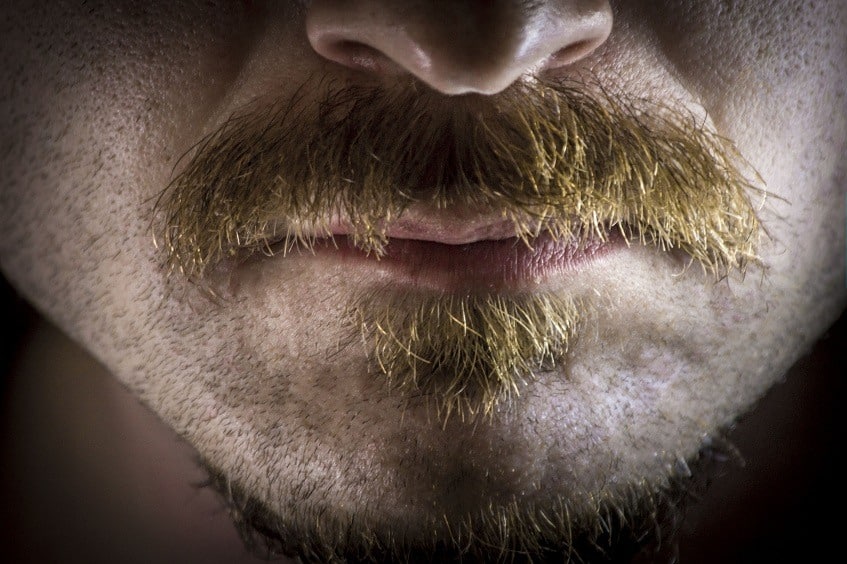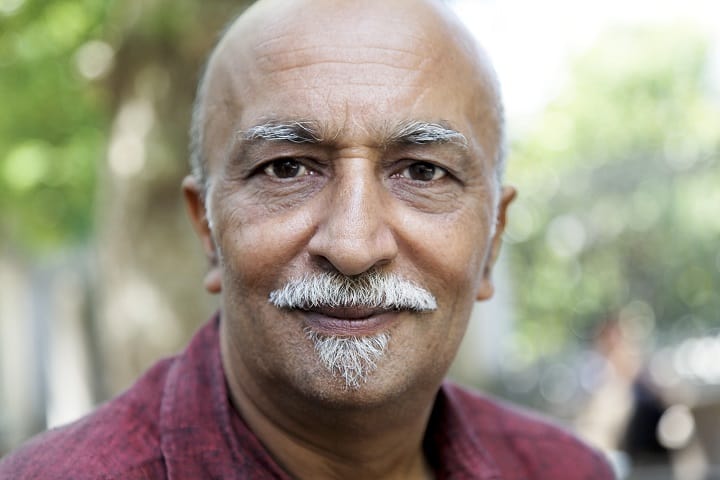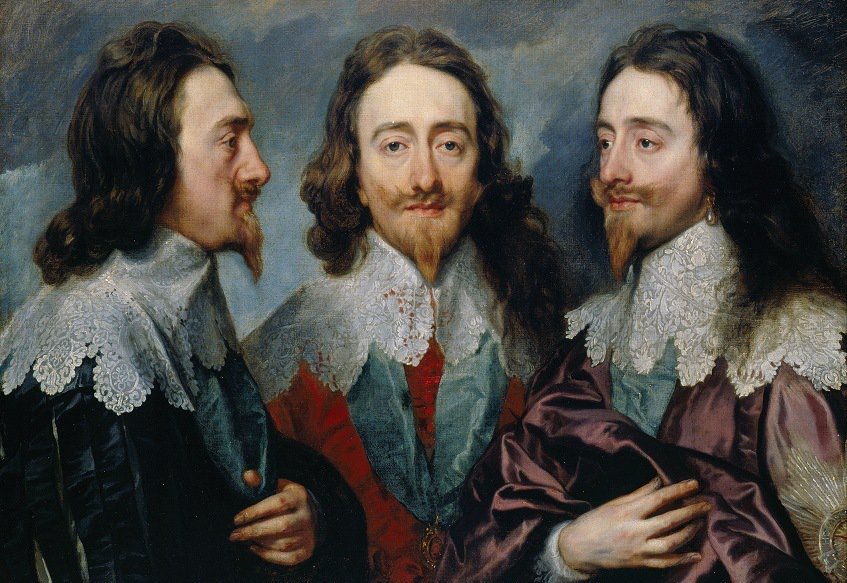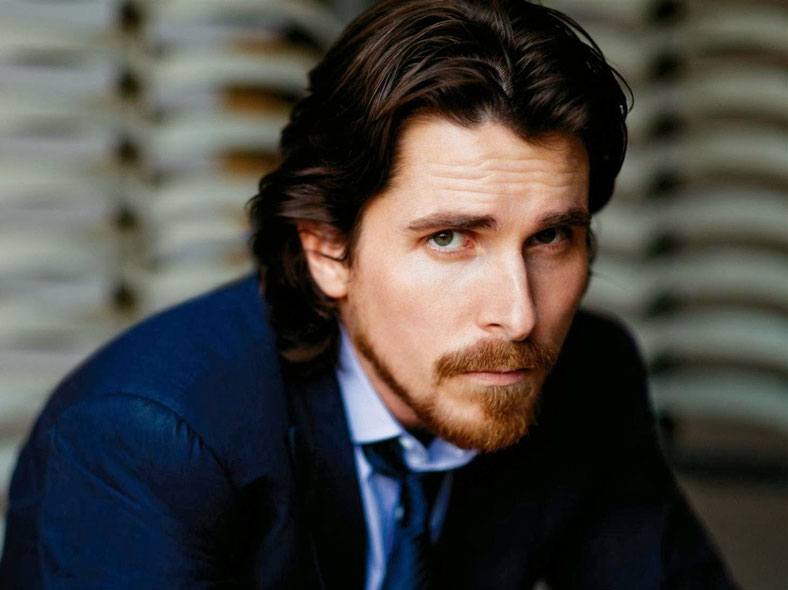Dating back to the 17th century, the Van Dyke beard is one of the oldest styles in history and it’s popular even today.
That’s four centuries, folks.
When a style survives and thrives for that long, it deserves the title of an imperial, timeless look.
If that’s not enough for you to grow it, maybe the fact that it’s the most sought-after beard style in Hollywood will.
Brad Pitt, Mel Gibson, Johnny Depp and Leonardo DiCaprio rocked this style at least once.
Refined, edgy, modern, elegant, popular in Hollywood and four centuries old? Checked.
So, if you want to appear and feel like a Hollywood star, with all (men and women) looks on you, you now know which style to ask for when you go to your barber next time.
Browse through our selection of the most popular Van Dyke beard style variations, choose your own and find out everything you need to pursue the famous Van Dyke.
Table Of Contents
- Most Popular Van Dyke Beard Styles
- What Is a Van Dyke Beard
- Benefits of Growing One
- History of This Beard Style
- Different Face Shapes
- Famous Historical Figures Wearing Van Dyke Beard
- Clean and Contemporary
- How to Grow It Easily
- How to Style and Shape Your Van Dyke Beard Style
- How to Maintain One
- Quick Tips for Maintaining It
- Do’s and Don’ts
- FAQ
Most Popular Van Dyke Beard Styles
The Van Dyke beard style is one of the most versatile and there are certain styles that you can try.
Traditional Van Dyke Mustache
The Van Dyke beard was popularly worn by the famous painter as well as Charles I hence the reason why it is sometimes referred to as a Pickedevant. The term stems from the French phrase “pique devant” which simply translates to front spike.
The style is flamboyant depending on the combination of an Imperial mustache and any hair growth under the mouth.
There are a variety of Handlebar and Imperial mustaches that can go well with a Van Dyke but hair beneath the mouth is usually unique to the style.
The hair tends to grow under the lips from the soul patch area continuing towards the chin and widening towards the bottom stopping on the chin just after the jawbone.
At its widest, it doesn’t exceed an inch to reveal the corners of your chin. The hair length varies but there is usually a slight taper near the soul patch.
The hair is usually half an inch but this can vary depending on your desired style.
Doc Holliday Van Dyke
This beard style gets its name from the dentist, card shark as well as a gunslinger who was famous because of his friendship with US Marshal Wyatt Earp and participation at the O.K. Corral.
While he is better known for his involvement at Tombstone, his career began as a dentist only to be diagnosed with Tuberculosis at the age of 21 and given only a few months to live.
His coughing fits would see his business decline which caused him to turn to gambling as a source of income and despite the diagnosis, he lived up to 36 years.
The Doc Holliday Van Dyke mustache is reminiscent of the Old West and he can be seen rocking the style in a few portraits and his character would wear one of the styles in Tombstone (1993) as well as Wyatt Earp (1994).
Mistletoe Mustache
The mistletoe mustache is referred to as the Guy Fawkes mustache and it is a rare style that was popularized in the 2005 film V for Vendetta as a mask.
The mask has gone on to be a symbol of the Anonymous hacktivist group and today it is mostly used in protests and other movements to represent unity around a common cause.
It is a combination of several styles and it is not as eccentrically styled as the initial representation. The mustache can be a Handlebar style.
It entails two curved chevrons that start at the nostrils sloping down to the lips. The chevron tips are grown out and curled with styling products like mustache wax.
The hair beneath the mouth however is similar to that in a traditional Van Dyke but the hair is trimmed to be narrower to resemble an upturned spear point.
Growing a mistletoe mustache requires patience since it takes time to grow. You also need to follow that up with regular styling as well as grooming. It will require you to shave daily to ensure that the look remains neat.
What Is a Van Dyke Beard
The Van Dyke beard is one of the most popular beard styles today with well-known names rocking the style even on the red carpet.
It is a full goatee that has a floating mustache such that the chin beard and the mustache don’t connect at the corners.
What makes this style unique is that both the hair on the chin and the mustache are long and pointy.
However, you can grow different variations of the beard style and still be able to pull off the same look.
This beard style adds a classic mustache to a goatee while keeping the mustache and chin beard separated at the corners.
Both the mustache and the chin beard are pointy, giving this beard style its distinguished, sharp look.
Benefits of Growing One
Van Dykes are classic beard styles with a wide variety of styles that are easy to not only learn but pull off.
The look requires you to grow a goatee and a mustache with the most popular face shape being a round face. A Van Dyke helps to balance the roundness thanks to a narrow goatee.
However, the look can also go well with other face shapes. Here are a few benefits of growing a Van Dyke beard that you can’t afford to ignore.
Works Well With Scanty Beard Growth
If you are among the group of men who can’t grow a full, thick beard, then the Van Dyke may be the beard style for you.
This is because the mustache and the goatee can still be narrow and scanty but still look good and no one will ever know that you have scanty beard growth.
Additionally, men who only grow patchy beards whether that is due to genetics, hormonal imbalance or underlying medical conditions can opt for a Van Dyke beard.
The only thing you need to ensure is that you shave your face clean and only remain with the goatee and the mustache.
Versatile
Unlike other beard styles, the Van Dyke style goes with different face shapes. You can, therefore, style it based on your face structure to achieve a look that suits you best.
Easy to Learn
The Van Dyke is one of the easiest styles to pull off and learn. As long as you have a good trimmer, you can easily master how to trim your beard compared to other beard styles.
Low Maintenance
The Van Dyke is a low maintenance beard style. The only thing you need to do is to ensure that the edges are always defined by ensuring that the rest of the face is shaved clean.
History of This Beard Style
This facial hairstyle has been around since the 17th century when the Flemish painter Anthony van Dyck came up with the brilliant idea to combine a goatee and classic mustache into an inspiring new style that he called the “Van Dyck”.
Over time, the style has been spelled with some variation, leading to the contemporary spelling, “Van Dyke.”
Different Face Shapes
Despite the specific characteristics of the Van Dyke beard, it is one of the most versatile styles.
It can be adjusted to fit the shape of any face structure as well as to highlight different features.
Here are different face shapes that are perfect for the Van Dyke beard style;
Oval Face Shape
The harmonious characteristics of the oval face shape makes it the most ideal for a majority of Van Dyke styles.
Although a Handlebar mustache can throw off the proportions, any growth underneath the mouth works well to correct any distortions.
Square Face Shape
Square face shapes tend to be well balanced, and this makes it easy for one to experiment with different mustache styles.
However, brushier and softer finishes look better since there is no risk of overexposing any of the angular features.
Diamond Face Shape
Although pulling off a Van Dyke with a diamond face shape is challenging, it can be done. Such men should go for bushy and softer finishes so that you don’t end up overemphasizing your hard features.
Besides that, ensure that you don’t do a wide mustache since it increases your cheekbone width.
Heart Face Shape
Handlebar mustaches are always problematic when it comes to Heart shape faces mainly because the thick mustache causes the chin to sink into the jawline.
However, using a long and thick Van Dyke negates some of the effects, reinforcing the chin’s bulk in the process.
Round Face Shape
Just like the Heart face shape, round shape faces have features that make bushy Handlebar mustaches problematic.
Going with a tall Van Dyke can counteract the effects providing for more face length.
Oblong Face Shape
Men with oblong face shapes need to be very careful when it comes to growing a mustache but a bigger mustache helps achieve wider cheeks.
However, you are better off with a Doc Holliday style Soul Patch since the last thing you want is to elongate the face further.
Triangle Face Shape
Men who have triangle-shaped faces can do a broad mustache to offset the pronounced jawline.
However, you need to be very careful that you don’t end up over enlarging your mustache since this ends up undermining its effect. As such, a Doc Holliday style would work perfectly for you.
Famous Historical Figures Wearing Van Dyke Beard
This style was popular in the 17th century, gaining an imperial status after Antony van Dyck himself painted King Charles I of England sporting the dashing mustache-goatee style.
Photo from: en.wikipedia.org
As time passed, of course, other beard styles grew in and out of fashion.
But Van Dyke style thrived as famous historical figures wore it proudly.
The list includes American Civil War legend General Custer, Russian revolutionary and controversial figure Vladimir Lenin, and the king of the fried chicken chain, Colonel Sanders.
Clearly, the Van Dyke is a beard sharp and distinct enough to grace the visages of some major political and imperial figures.
Clean and Contemporary
For the last couple of years, this style has been resurging as a beard style.
With its clean edges and sharp trim, it is quickly becoming a preferred look amongst distinguished contemporary figures, from P. Diddy to Viggo Mortenson, Jeremy Renner, Christian Bale and Johnny Depp.
Photo from: Imdb.com
The Van Dyke is #8 on our list of 20 trendy and popular beard styles for black men, and while it’s a sharp look for any face shape, it’s especially a choice style for black men who have rounded baby faces.
How to Grow It Easily
If you want to go for a royal style like the King of Gondor himself, then there are a few items you’ll need before embarking on your bearded journey.
Tools needed:
-
- Shaving Cream
- Beard Comb
- Beard Balm or Wax
- Straight Razor
- Beard trimming scissors
As with any journey, preparing your face for this beard style will require some time.
You should shave your face clean and let the hairs grow back for around a week.
You can start with a full beard, but it’s better to start with new hairs because it will be easier to for styling and trimming. You need about a ¼” of beard hairs.
Once the week of prep work ends, you’ll be ready to learn:
Step 1 – Begin with a clean-shaven face
Whether you have been doing this for years or are just getting started, your face is your canvas and you need to start fresh. Clean shave your face and then wait a week for the facial hair to even out.
You know you are ready for a Van Dyke beard when your stubble is at about quarter an inch long. How fast facial hair grows varies from one individual to another but what you need is patience.
Step 2 – Apply some shaving cream
Apply shaving cream all over the chin, above the lip area, and up on the sideburns.
Step 3 – Make a circle beard
Start by shaving the cheeks and the sideburns beginning near the ears and removing the sideburns as well as the hair on your cheeks leaving at least 2 inches on both sides of the mouth.
Shave your hair from the bottom and sides of the neck, ensuring that you stop just above the Adam’s apple. Leave the soul patch and the mustache intact and the result is what is referred to as a circle beard.
Step 4 – Rinse off
Rinse off any excess hair and shaving cream so that you have a clear view once you begin trimming.
Step 5 – Create a neat goatee
Trim the hair on your neck leaving a small neat beard that resembles a goatee. An electric razor or scissors should help your control the shape as well as the definition of the chin hairs.
Step 6 – Disconnect the mustache from the chin beard
While trimming make sure that the skin around the soul patch is completely devoid of hair.
Step 7 – Trim the mustache
When you are trimming the mustache, measure twice and cut once. Just like the chin beard, the Van Dyke mustache should also be neat and pointed.
Step 8 – Clean the face again
Once you are done, clean your face to ensure that you did not miss any hairs. Run your hands over the cheeks and around the beard feeling for any rough spots and go over them with a razor.
How to Style and Shape Your Van Dyke Beard Style
Step 1 – Prep
1 week before you start shaping your beard into this style, shave your entire face clean to allow a consistent beard hairs growth.
Step 2 – Lather up
Generously lather your face with shaving cream.
Step 3 – Creating circle beard
Basically, you’ll want to shave until you have a “circle beard”. Start by shaving the sideburns and cheeks.
Leave about two inches of hair on both sides of the mouth.
Razor away all the hairs on the bottom and the sides, until just above Adam’s apple.
Step 4 – Rinse
Rinse the excess hair and shaving cream. All you need from here on out is enough shaving cream to smooth the way for the razor without covering up all the hairs.
Step 5 – Use a beard comb
Use a beard comb to even the hairs out and see if you’ve might miss some part.
Step 6 – Creating and shaping the goatee
Shave and clean up the chin beard into a goatee. The Van Dyke is known for the pointy chin beard, so if you have long enough beard, trim the hairs on the chin to a sharp point.
If you grow a soul patch, keep it.
For the unsteady handed men, we have a guide with tips on how to trim a beard with scissors.
You can also use an electric trimmer instead of scissors, but if you know how to handle scissors like a pro because you’ll better get the sharp points and clean lines that this facial hair style is famous for.
How to Maintain One
Step 1 – Comb the beard
When it comes to a Van Dyke beard, a small beard comb will do the job of removing any stray whiskers as well as food crumbs. Since the Van Dyke is a refined style, any inattention will always show.
Step 2 – Keep the lines well refined
The shape of the chin beard has a huge effect on your overall appearance so ensure that the lines remain clean.
While you can’t stop new beard growth, you need to pay attention to your face using a beard trimmer or a pair of scissors to shape the soul patch, mustache, and the chin beard area.
Step 3 – Use beard wax
Mustache and beard wax, when applied with a twist of the fingers, will shape your Van Dyke.
Quick Tips for Maintaining It
Don’t Run With Scissors
This is a tightly styled look, so it requires precision. At this step, grab your scissors and carefully trim the hairs connecting the corners of the mustache to the beard.
Wash
Wash again and check for any patches of missed hair. The Van Dyke is distinct for its clean edges.
Comb Your Beard
Comb the hair out and then use beard balm or wax to style en pointe.
At this point, you should be looking in the mirror and seeing an imperial visage with pointed mustache and goatee. It’s a style fit for royalty.
Do’s and Don’ts
- Do consider the shape of your face and choose a Van Dyke style that doesn’t bring out the negative features of your face.
- Do use styling products like mustache wax to style and maintain the shape of your Van Dyke beard style.
- Do ensure that you clean shave your face if you are to pull off a Van Dyke.
- Do use a specific beard comb to maintain the shape of your Van Dyke beard and to remove any loose hairs.
- Don’t forget to keep the lines well defined with the use of a beard trimmer of sharp scissors.
FAQ
Is a Van Dyke beard attractive?
The Van Dyke beard is as attractive as it is popular. It involves pairing a goatee with a mustache creating a classic and masculine beard style that anyone including those with patchy beard growth can pull off.
What is the difference between a Van Dyke and a goatee?
Most people confuse the Van Dyke beard with a goatee but in reality, the former is a variation of the goatee style. A goatee is characterized by facial hair that grows on the chin only, often referred to as a chin beard. Goatees don’t include a mustache as well as the connective trail of hair between the mustache and the chin.
With that in mind, any beard style that includes a mustache is not a goatee. If the cheeks are clean-shaven and the stubble is thick, then that is a Van Dyke.
How long does it take to grow a Van Dyke?
A Van Dyke takes 2 to 4 weeks or longer to grow depending on how fast your hair grows. The idea is to allow the beard to grow to about a quarter of an inch for the perfect Van Dyke.
Conclusion
Van Dyke beard is one of the oldest beard styles that can be traced back to English royalty, Roman Emperors and even Vladimir Lenin. It is a versatile style that can go with any face shape and represents a certain degree of sophistication. Keeping your Van Dyke closely trimmed is the best way to pull of the style.
Vinnie is one of the members of the Beardoholic writers team. He’s also a barber and hairstylist for 15 years now and he has a kick-ass beard of his own, so he surely knows what makes a magnificent beard and hair and how to achieve them. He’s our go-to guy for all the latest beard and hairstyle trends and he always has a tip or two on how to grow and style a thick beard fast.






